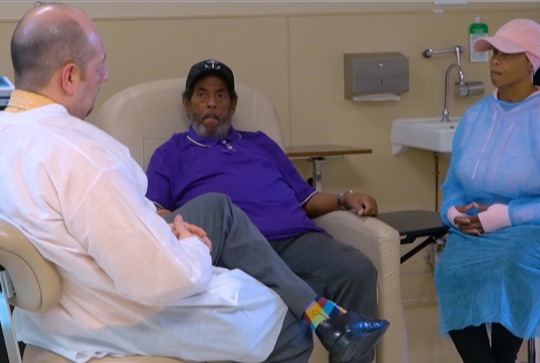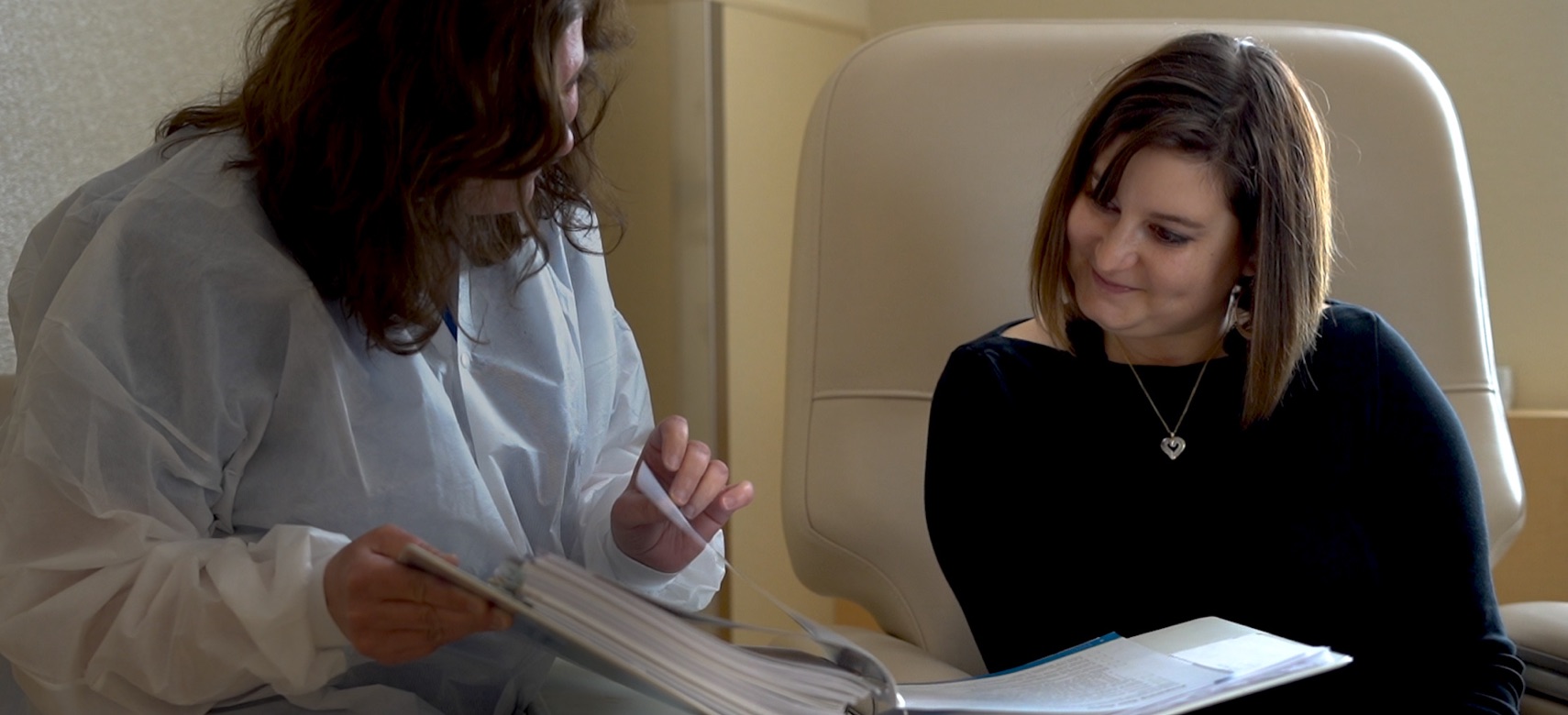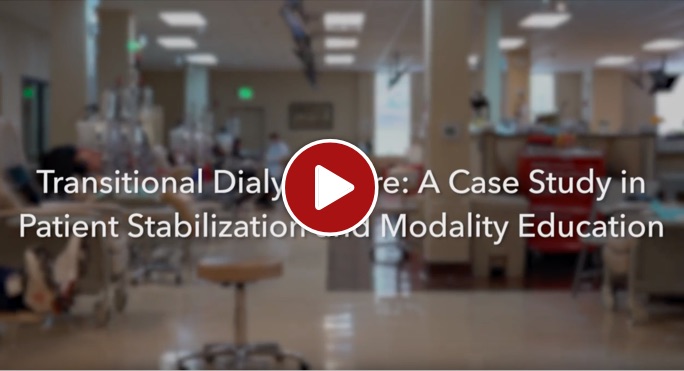What is Transitional Dialysis Care?
Innovative model designed to gently transition patients into the dialysis modality best suited to their individual clinical and lifestyle needs.
Easing patients into dialysis and educating them on their modality choices can help them make informed decisions, that meet their clinical and quality of life goals. Using existing center staff and infrastructure, transitional care provides the opportunity of expanding home hemodialysis (HHD), in-center dialysis (ICHD), and peritoneal dialysis (PD) programs.
Transitional Dialysis Care is designed to allow patients time to:
- Recover medically
- Adjust emotionally
- Receive thorough education about all their treatment options – including both dialysis and transplant
- Choose the modality that best fits their unique clinical and lifestyle needs
Crashing Into Dialysis
Patients who end up on dialysis often do so in a rapid change or crash from disease progression, PD or transplant failures, or emergency hospital treatments.
These patients may experience a range of emotions from fear to anxiety and depression. The uncertainty of their health may make it difficult to receive modality education and make long-term decisions about renal replacement therapy.
Did You Know?
Many patients are not presented with all treatment options.1
According to a survey of new dialysis patients:
- 66% weren’t presented the option of PD
- 88% weren’t presented the option of HHD
- 74% weren’t presented the option of transplantation
Clinical stabilization is critical to incident dialysis patients.
People who crash into dialysis have the highest mortality rate in the first 6 months of therapy.2
- Mortality risk is 80% higher in the first two months
Impact On Patient Modality Decisions
The below results suggest that the Transitional Dialysis Care model can be an effective strategy for increasing patient selection of home dialysis modalities with better overall clinical outcomes.
A recent survey of 60 patients who graduated from one of 10 participating US Transitional Dialysis Units between October 2018 and April 2019 found that:3
- 70% of patients selected a home modality upon completion
- 25% chose HHD
- 45% chose PD
- Some of the top reasons that patients selected a home modality were:
- Control over treatment and schedule compared to in-center
- They received education about health outcomes
- They wanted less time driving to/from a dialysis center, and wanted the ability to travel with their dialysis system

Resources
The below resources provide helpful information regarding Transitional Dialysis Care.
Contact Us For More Information
For more information on starting Transitional Dialysis Care in your center, complete the form below and a NxStage representative will contact you to discuss your goals and provide helpful resources.
Risks and Responsibilities
The reported benefits of home hemodialysis may not be experienced by all patients.
Despite the health benefits that home and more frequent hemodialysis may provide to those with chronic kidney disease, these forms of therapy are not for everyone. Please review this information carefully and discuss it with your doctor as you evaluate your therapy options.
Personal and Partner Responsibility
Home hemodialysis with the NxStage System during the day may not require a care partner, provided a physician and a qualified patient agree that solo home hemodialysis is appropriate. Patients performing nocturnal treatments are required to have a care partner. Care partners are trained on and follow guidelines for proper operation. If you choose to do more frequent home hemodialysis, you will be responsible for complying with your dialysis prescription, which may require treatments up to six days per week.
If you choose to do home hemodialysis alone during the day, you will need to take on the responsibility for tasks that would normally be taken care of by staff when in-center. You will need to perform all aspects of dialysis treatment from start to finish, including equipment setup, needle insertions, responding to and resolving system alarms, and system tear-down after treatment. In addition, you must monitor your blood pressure, ensure proper aseptic technique is followed, and follow all the training material and instructions given to you by your training nurses. You will also be trained on and need to know how to respond to health emergencies that might happen during treatment at home, including dizziness, nausea, low blood pressure, and fluid or blood leaks.
Treatment Environment
You must ensure that you have a clean and safe environment for your treatments. You also need to set aside space in your home for the needed supplies.
Risks Associated with All Forms of Hemodialysis
All forms of hemodialysis involve some risks. These may include high blood pressure, fluid overload, low blood pressure, heart-related issues, vascular access complications, cramps, backache, headache, dizziness, nausea, an “off” taste in the mouth, fatigue, fever, chills, joint pain, itching, seizures or sinusitis.
All hemodialysis therapies also involve the use of medical devices that introduce the potential for additional risks including air entering the bloodstream, damage of red blood cells, inflammatory reactions, blood chemistry imbalances, blood loss due to clotting of the blood tubing set or accidental blood line disconnection or other leak, allergic reactions, and excess warming or cooling of the dialysate. In addition, dialysis patients may have other underlying diseases that may, in some cases, make it more difficult for them to manage their hemodialysis treatments.
Risks associated with More Frequent Home Hemodialysis
Studies suggest that patients performing more frequent home hemodialysis may experience slightly fewer complications associated with their treatments and may experience improved clinical outcomes. However, there are certain risks unique to treatment in the home environment. Treatments at home are done without the presence of medical personnel and on-site technical support. Patients (and their care partners, if required), must both be trained on what to do and how to get medical or technical help if needed. When vascular access is exposed to more frequent use, infection of the site, and other access related complications may also be potential risks.
Risks Associated with Solo Home Hemodialysis Therapy
A qualified patient may dialyze alone, without a care partner present (solo home hemodialysis), provided the patient and physician agree that solo home hemodialysis is appropriate. Certain risks associated with hemodialysis treatment are increased when performing solo home hemodialysis because no one is present to help the patient respond to health emergencies. If patients experience needles coming out, blood loss, or very low blood pressure during solo home hemodialysis, they may lose consciousness or become physically unable to correct the health emergency. Losing consciousness or otherwise becoming impaired during any health emergency while alone could result in significant injury or death. Additional ancillary devices and training are required when performing solo home hemodialysis.
Increased Risks Associated with Home Nocturnal Hemodialysis Therapy
The NxStage System may be used at night while the patient and care partner are sleeping. Certain risks associated with hemodialysis treatment are increased when performing nocturnal therapy due to the length of treatment time and because therapy is performed while the patient and care partner are sleeping. These risks include, but are not limited to, blood access disconnects and blood loss during sleep, blood clotting due to slower blood flow or increased treatment time or both, and delayed response to alarms when waking from sleep. Treatment with nocturnal therapy may require adjustments to medications, including but not limited to iron, Erythropoiesis-Stimulating Agents (ESA), insulin/oral hypoglycemics, anticoagulants, and phosphate binders.
References:
- Mehrota R, Marsh D, Vonesh E, Peters V, Nissenson A. Patient education and access of ESRD patients to renal replacement therapies beyond in-center hemodialysis. Kid Int. 2005;68(1): 378-90.
- Lukowsky LR, Kheifets L, Arah OA, Nissenson AR, Kalantar-Zadeh K. Patterns and predictors of early mortality in incident hemodialysis patients: new insights. Am J Nephrol. 2012;35(6):548-558.
- NxStage Data on File. Transitional Dialysis Care Patient Decision Survey. April 2019.




![[Case Study] The Satellite Healthcare Optimal Transitions Program](https://www.nxstage.com/wp-content/uploads/2018/08/tdc-resource-tdc-guide.png)
![[AJKD Article Summary] Improving Incident ESRD Care Via a Transitional Care Unit](https://www.nxstage.com/wp-content/uploads/2018/08/tdc-resource-summary-ajkd.png)
![[Operational Guidance] Transitional Dialysis Care](https://www.nxstage.com/wp-content/uploads/2018/08/tdc-form-opguidance-pdf.png)
![[Podcast] What is Transitional Dialysis Care?](https://www.nxstage.com/wp-content/uploads/2019/08/APM3551-Bob-Lockridge-What-is-TDC-Vignette-Podcast.png)
![[Podcast] University of Virginia Transitional Start Unit](https://www.nxstage.com/wp-content/uploads/2019/08/APM3552-Debbie-Cote-TDC-at-UVA.png)
![[Podcast] University of Virginia Transitional Start Unit Outcomes](https://www.nxstage.com/wp-content/uploads/2019/08/APM3553-Debbie-Cote-TDC-Outcomes-at-UVA.png)

